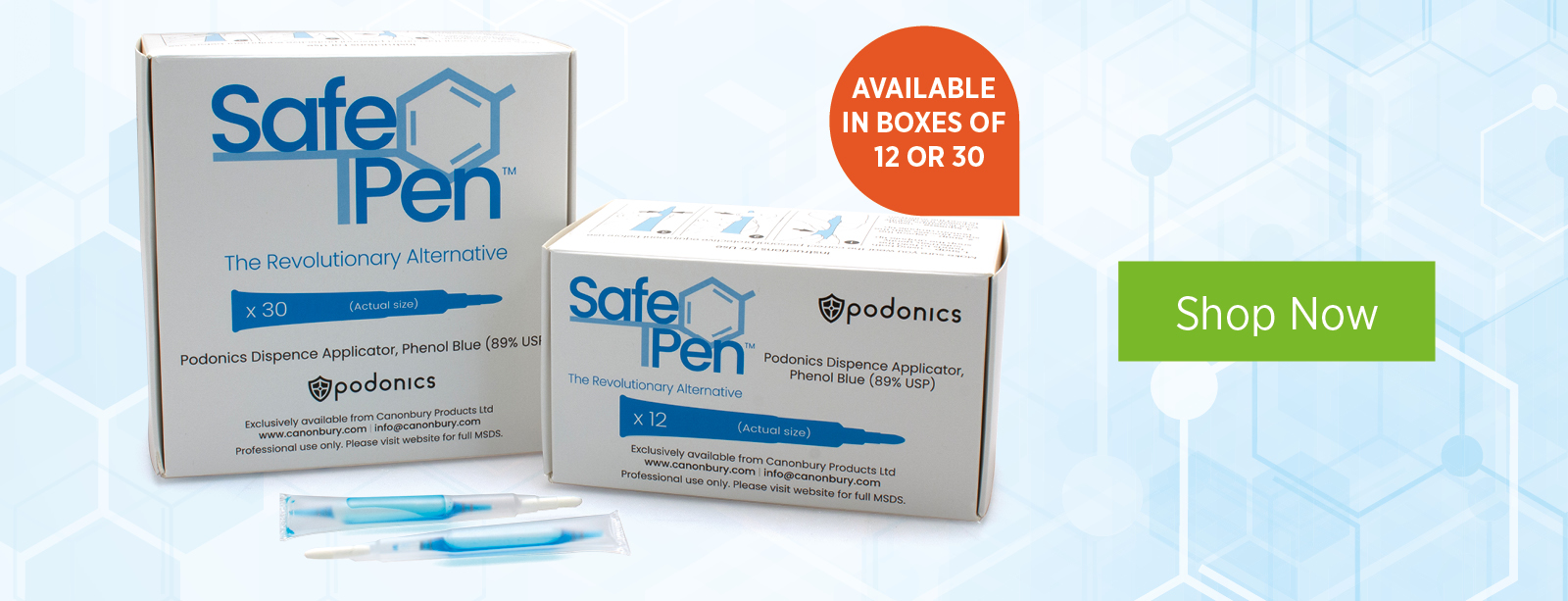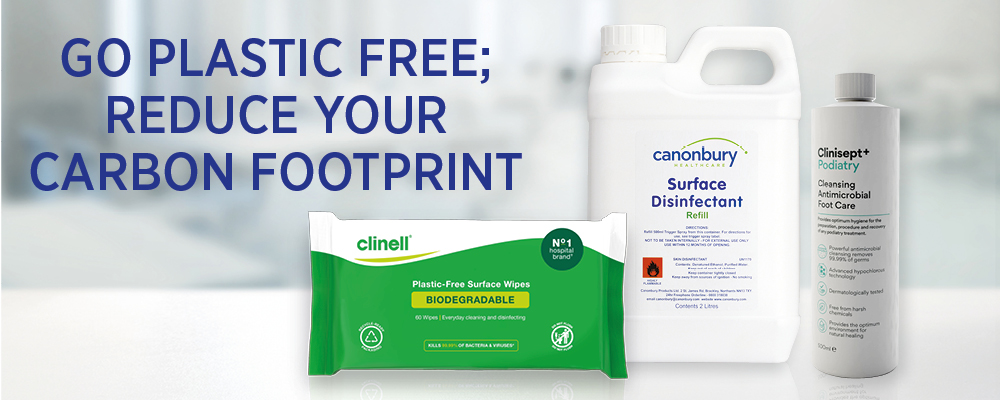Understanding SafeTPen & its Role in Phenol Application
- Sales Team
- Canonbury
- 17 Feb 2025

We’ve all heard conversations surrounding the SafeTPen phenol applicator, but for those who haven’t experienced using this product you may be asking – What is Phenol? And why is the safe application of Phenol so important for practitioners?
Here are your questions answered…
What is Phenol?
Phenol is also known as Carbolic acid or Hydroxybenzene. It has antimicrobial, anaesthetic, and antipruritic properties. (And for those of us who are new to this subject, it’s a chemical that ‘kills germs, numbs pain, and helps stop itching’!)
Phenol can be found naturally in our bodies (e.g. proteins and epinephrine) as well as in food substances like vanilla, thyme, and cloves. It can be a liquid, crystal or white solid and is used at different strengths across the medical and cosmetic industries.
Uses of Phenol:
• Medical & Healthcare: Used in podiatry and dermatology for treatments like wart removal, nail matrixectom and chemical peels.
• Antiseptic & Disinfectant: Found in throat sprays (e.g., Chloraseptic) and disinfectants.
• Cosmetics: Used in sunscreens, skin toners, and exfoliators.
• Manufacturing: A key ingredient in making plastics, resins, and adhesives.
While phenol is useful, it can be toxic in high concentrations, so it must be handled with care.
How is phenol used in Podiatry?
Liquid phenol is primarily used in podiatry during nail surgery to destroy the nail matrix, preventing regrowth. Before the National Patient Safety Alert on 25th August 2021 (NHS England, 2021), podiatrists typically poured phenol from a bottle into a gallipot, which exposed both practitioners and patients to harmful fumes and increased the risk of spillage. Following the alert, the use of bottled liquid phenol was no longer recommended, requiring podiatrists to adopt safer alternatives.
Phenolisation in Nail Surgery
The decision to remove a nail is based on factors such as chronic pain, recurrent ingrowing toenails (onychocryptosis), surgical relapse, and failure of conservative treatments (Martínez-Nova, Sánchez-Rodríguez & Alonso-Peña, 2007). During surgery, phenolisation is often used alongside partial or total nail removal in procedures such as Zadek’s procedure, Vandenbos procedure, Terminal Syme procedure and Winograd procedure (Wooldridge, 2021; Eekhof et al., 2012)
Challenges with Traditional Phenol Application
Phenol stored in plastic tubes or bottles can absorb moisture from the air, which dilutes its strength and reduces its effectiveness as a nail ablation agent (RCoP, 2021).
Historically, 30 years ago, podiatrists were trained to apply phenol using an orange stick or dropper onto a Black’s file within the nail sulcus (IOCP, 2022). The phenol would then be rubbed in for three one-minute intervals. Over time, this method evolved into using cotton wool-tipped orange sticks. However, both techniques require precision to prevent phenol from dripping onto healthy skin or seeping under the tourniquet (circulation control device), as this could cause chemical burns.
By adapting to safer phenol application methods, podiatrists can minimise risks while ensuring effective nail matrix ablation.
What is SafeTPen?
SafeTPen is an innovative ampoule system designed for the safe and controlled application of phenol during nail surgery. Each ampoule contains 0.4ml of blue-tinted phenol liquid (89% USP concentration), securely housed within a glass ampoule encased in a protective plastic outer shell with a compressed polyester tip. This design enhances precision and minimises risks associated with traditional phenol application methods.


Enhancing Safety and Precision in Nail Surgery
Using phenol in nail surgery requires precision to avoid unintended skin burns, inhalation risks, and unnecessary exposure. SafeTPen revolutionises this process by offering a closed, controlled delivery system that reduces the likelihood of spills, splashes, and accidental contact with surrounding skin.
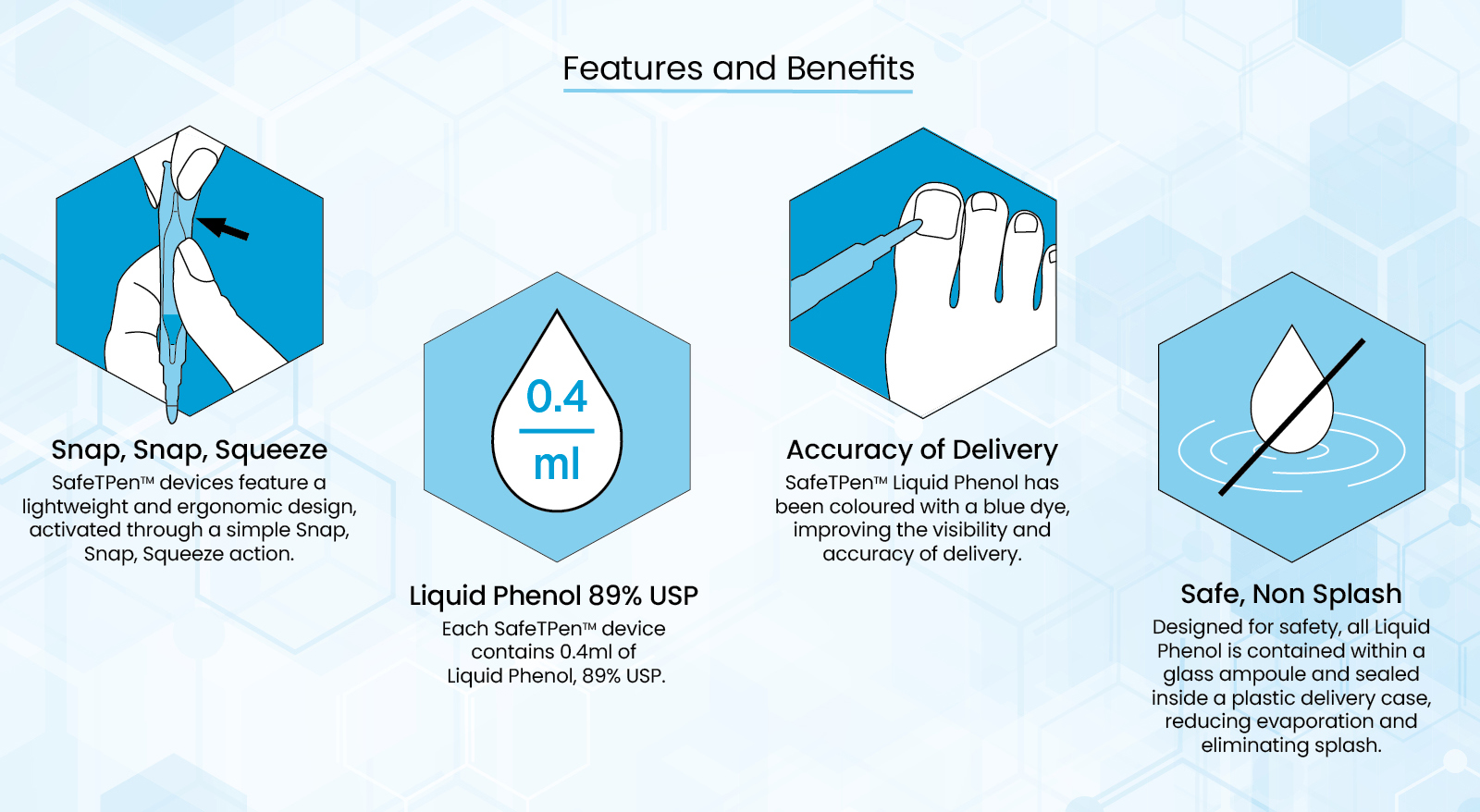

A key feature of SafeTPen is its blue dye, which:
• Clearly indicates where phenol has been applied, improving accuracy during surgery.
• Helps prevent accidental seepage under the tourniquet or onto surrounding tissue, reducing the risk of chemical burns.
• Allows practitioners to visually confirm if the ampoule has been damaged before use.
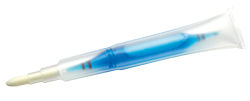

Additionally, the glass ampoule design ensures product stability by preventing evaporation and moisture absorption, which are common issues with plastic containers. This guarantees the practitioner is using phenol at its intended concentration.
The Importance of Precision in Phenol Application
Accidental contact of phenol with surrounding skin - such as the nail sulci or proximal nail fold - can cause unnecessary burns, leading to delayed healing and increased infection risk. SafeTPen’s tapered, compressed polyester tip ensures direct application to the nail matrix while the controlled squeeze-and-release mechanism allows for precise dosing, reducing the chance of over-application or flooding.
How SafeTPen Enhances Safety for Practitioners and Patients
The SafeTPen system features a ‘snap-snap’ opening method, designed to minimise splashes and accidental phenol exposure.
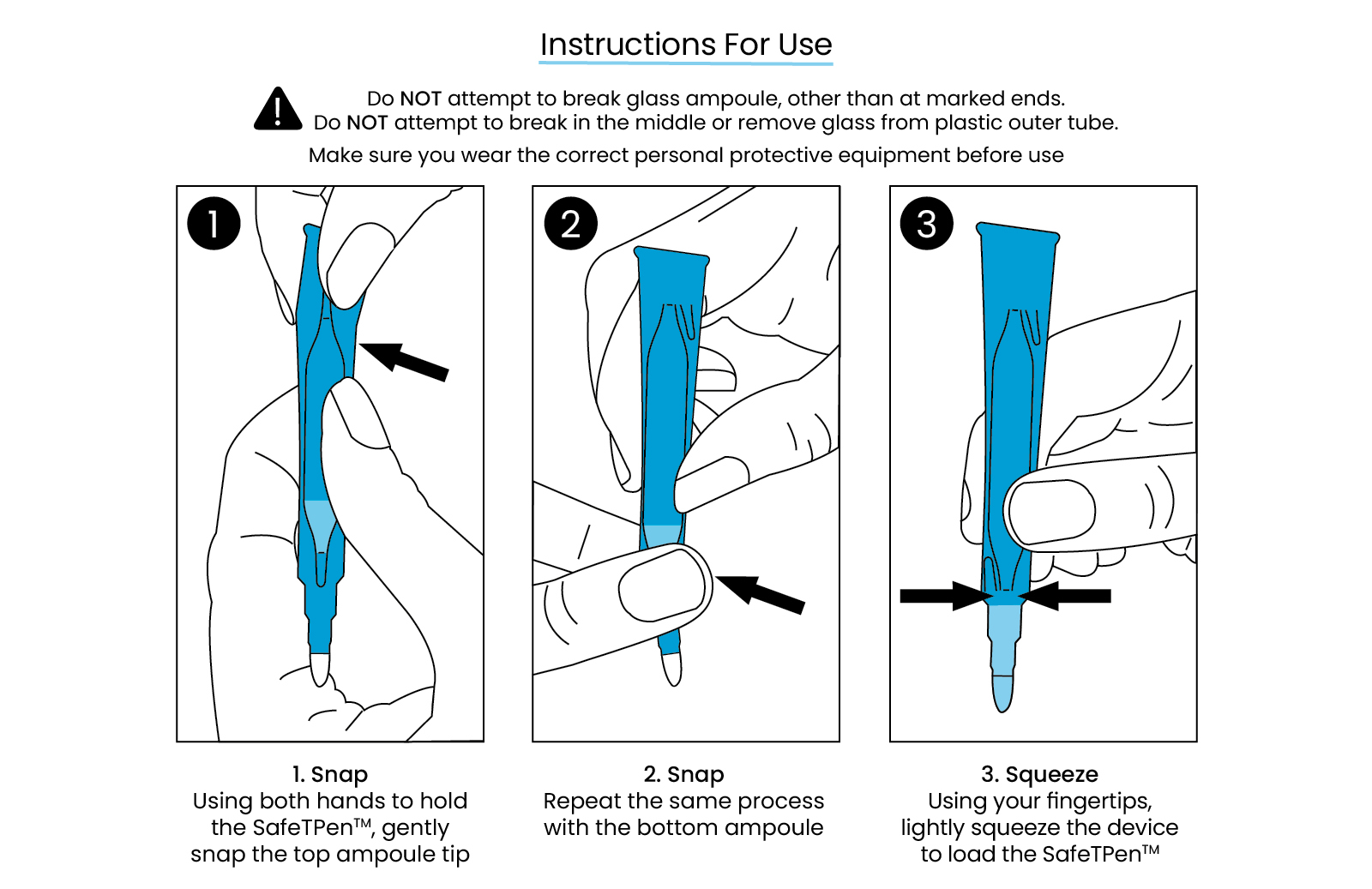

Its protective casing allows practitioners to assess ampoule integrity before use, further reducing potential hazards. Extensive durability testing has shown that SafeTPen withstands impact from drops up to 4 meters and being thrown up to 10 meters -providing confidence in its resilience.
Key safety benefits include:
• Reduced risk of phenol spills and splashes.
• No decanting required, minimising fume exposure and skin contact.
• A visible blue dye to quickly identify ampoule damage before use.
• A controlled delivery system that prevents excessive phenol application.
Advantages of Using SafeTPen in Podiatry Clinics
• User-friendly: Quick and simple to activate during procedures.
• Safety-focused: The blue dye ensures accurate application, and the closed system reduces exposure risks.
• Stable formulation: The glass ampoule prevents evaporation and maintains phenol’s integrity.
• Cost-effective: Contains double the amount of phenol compared to other brands, offering better value for clinics.
• Extended shelf life: Glass ampoule storage enhances longevity compared to plastic containers.
• No retraining required: Practitioners familiar with phenol can transition seamlessly.
Why Consider SafeTPen for Your Clinic?
SafeTPen offers a safer, more precise way to apply phenol during nail surgery, reducing risks for both practitioners and patients. With enhanced safety features, improved cost-effectiveness, and MHRA registration as a Class II medical device, it provides a reliable and compliant solution for modern podiatry practices.


By adopting SafeTPen, clinics can enhance procedural safety, ensure consistent phenol application, and optimise surgical efficiency - offering the best possible care to their patients.



